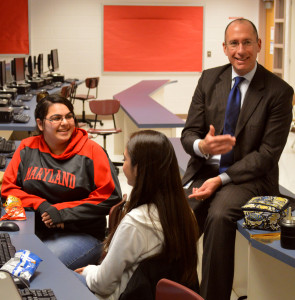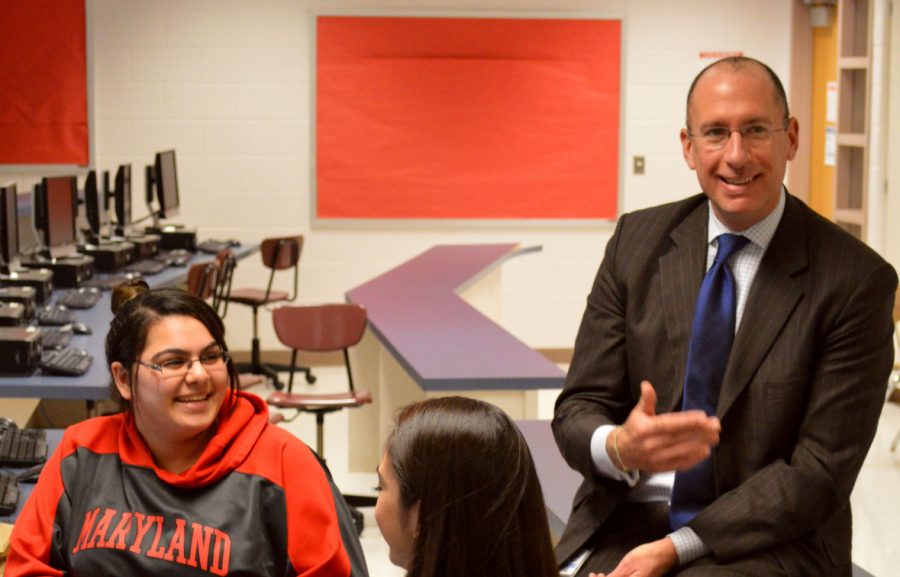Superintendent Visits School, Observes New Implementations
November 13, 2014

Superintendent Dr. Joshua Starr visited RHS Nov. 13 to evaluate the school’s recent developments, including the ACES program and the social studies department’s new Chromebooks.
His visit closely followed his annual State of the Schools Address Nov. 11, where Dr. Starr discussed topics such as closing the achievement gap. The same day, the Department of Education gave states until June to submit plans to bring their strongest teachers into high-poverty classrooms.
But as mentioned in his address and visit, MCPS already has a plan in place. Starting at the beginning of the year, MCPS initiated its Career Lattice program, partnering with its employment association to assign the most successful staff to the students in most need.
“[Career Lattice works] to encourage and incentivize our most creative, energetic and master teachers to either stay in or move to our most impacted schools to do new work and take on new responsibilities,” Dr. Starr said during his visit. “You can put all the programs you want into place, but if you don’t have the right people for it, you’re not going to [make an impact].”
MCPS has sent the message to administrators that qualified and effective staff are the most direct way to improve the school system. Dr. Starr said that RHSa�� ACES students credited their success to coach Natalie Sanchez, identifying staff as the root for student achievement.
Dr. Starr also addressed the student enrollment increase and the county’s plan to combat overcrowded schools while solving the issue of under-enrolled schools. John F. Kennedy HS, for example, is almost 300 students below capacity.
Unless MCPS buses students to different areas of the county, it is difficult to allocate more students to underpopulated schools through rezoning. Despite this, Dr. Starr and his staff are doing studies to see where updated boundary lines can provide beneficial change.
“Because we are growing so much, there are few clusters that aren’t overcrowded or won’t be at some point,” Dr. Starr said. “If I disrupt a family and a whole community a�� I want that to last for at least eight to ten years so we don’t have to make another change.”
The county is also seeing an increase in ESOL and Hispanic students, which demands additional staff trained to teach English as a second language. The Hispanic birth rate is up, and according to Dr. Starr, 2.3 children are born to every Hispanic family to every 1.8 children born to white families.
In response, MCPS has allocated $1.4 million to increase ESOL services in middle schools. “We’re trying to be a little more consistent [with our ESOL programs] a�� we’ve identified and are paying for teacher leaders at the elementary school level,” Dr. Starr said.
Lead teachers in middle schools’ ESOL departments are being identified and selected to move up to department head positions, in order to improve the growing programs.
RHS has received assistance from the county to balance the number of ESOL students and staff, including two rounds of additional staffing.
“There are more resources out there,” Principal Billie-Jean Bensen said. “We have more students, but we were supported as we continue to grow.”



